Initial Structure Property Relationship
Long Term Goals
- Establish a data structure for the quantification of Poly-3-hexylthiophene (P3HT) thin film morphology

Data
- AFM <– Structure

- UV-Vis absorbance spectra
- Electrron Mobility <– Property
Thresholding to 1. Identify fibers
The thresholding post discusses our algorithm for finding the perfect thresholding value to isolate individual fibers. The following image shows a brief example of our work.
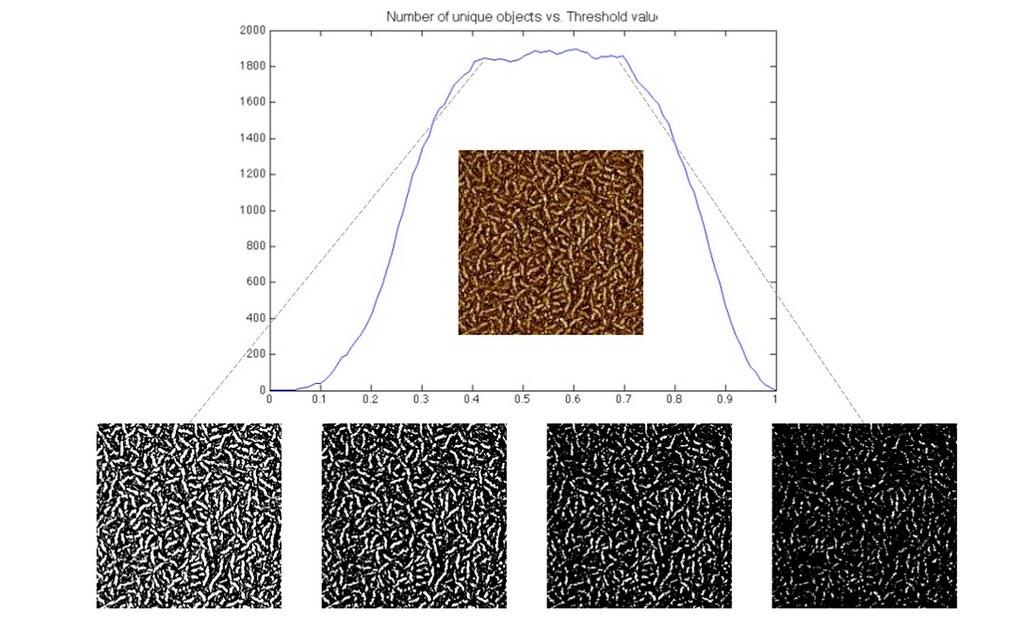
Spatial Statistics
##Work Flow: For each of the 16 stuctures:
- Created a binary image with thresholding (amorphous or crystaline fiber…no orientation information)
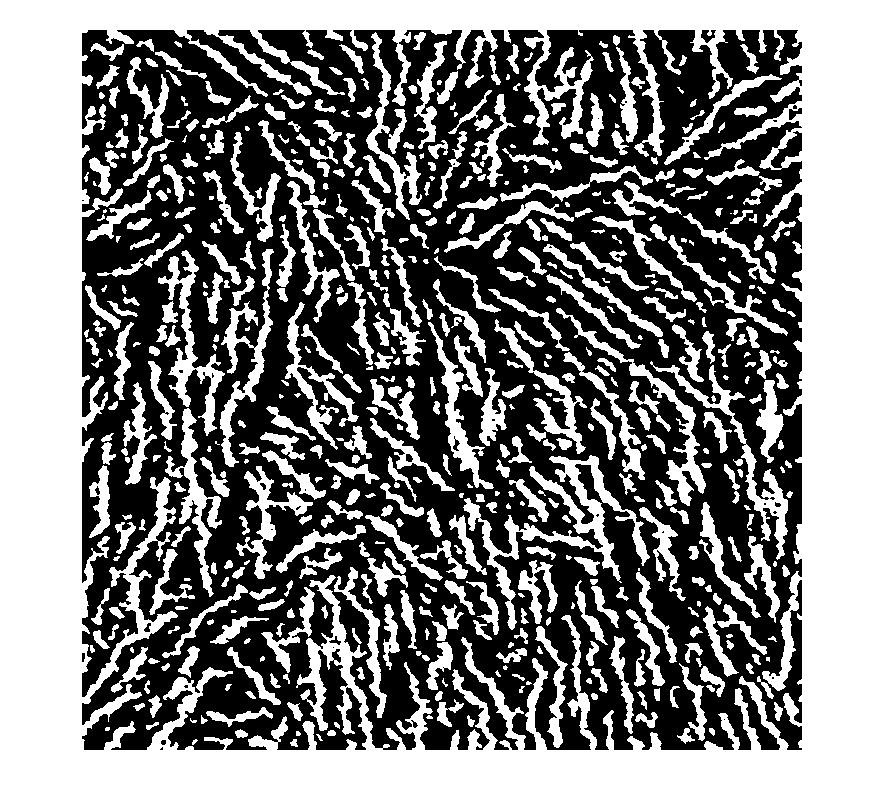
- Applied the SpatialStatsFFt Matlab function.
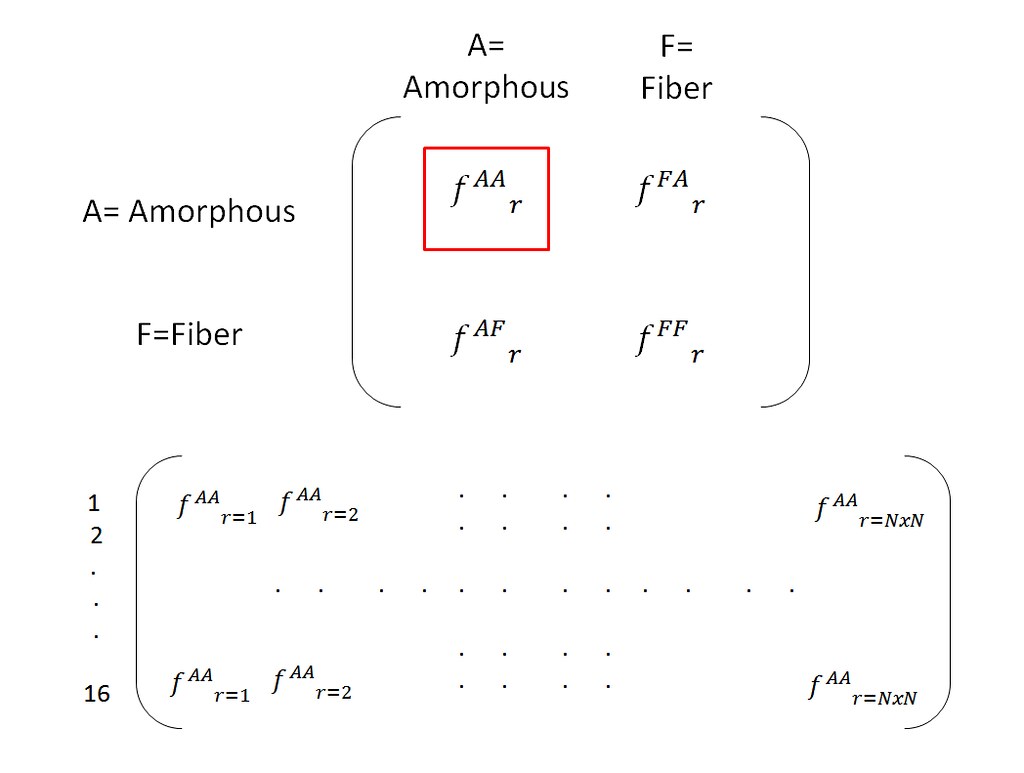
An exapmle of the above AFM image autocorrelation result: with a reasonable volume fraction of ~0.32
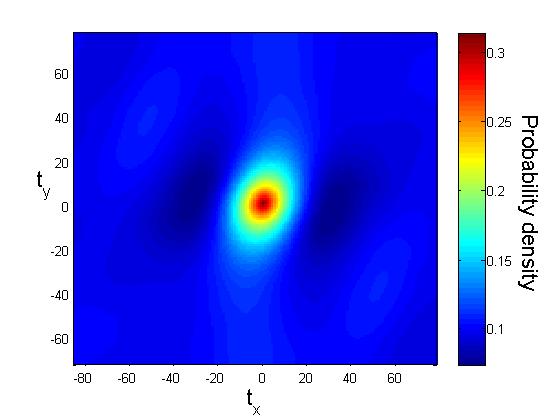
- Perform PCA using matlab functions.
An example of our sanity check:

Digging into the data a little bit:
Here are the coefficients of the 1st PC

- Perform perliminary analysis of electron mobility and 1st PC scores.
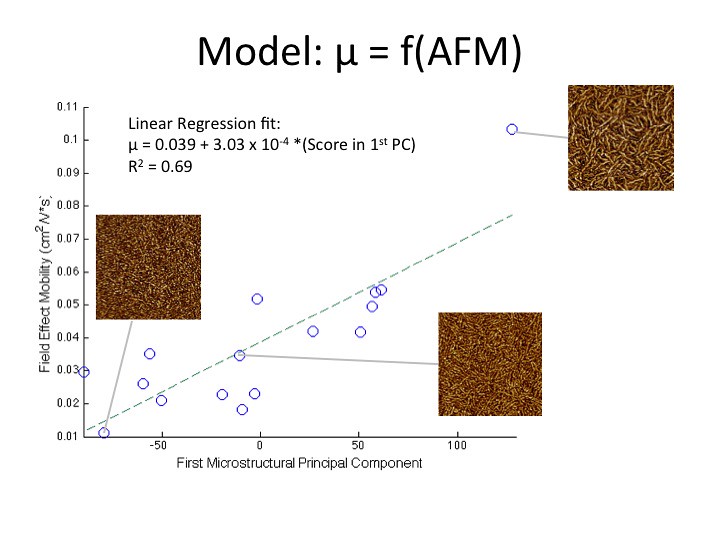
What have we learned?
- Longer and wider fibers are favorable for charge transport
- More fibers are not necessarily a good thing if they are small and siconnected
Why this matters?
- co-solvent addition is scalable processing method to achieve better charge transport
- we should study how and why fibers space themselves out: what is happening in teh space between? can we achieve morphologies that explore this domain?
